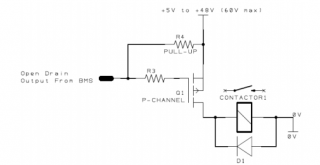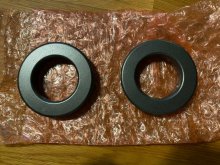There are some gigavac relays which use only 8mA at 48V. You could drive one of these with a mosfet amp circuit from the BMS discharge enable output.
Do you remember which ones or know how to find them? I was eyeing the MX23 which is 42ma and I thought that was quite low. 8 is crazy low.
The only problem with the Orion Jr is it can only handle 175ma of relay current - including pickup current. I wouldn't stick more than 150 on there. I have two relays as a result so I'm at 200ma right now





